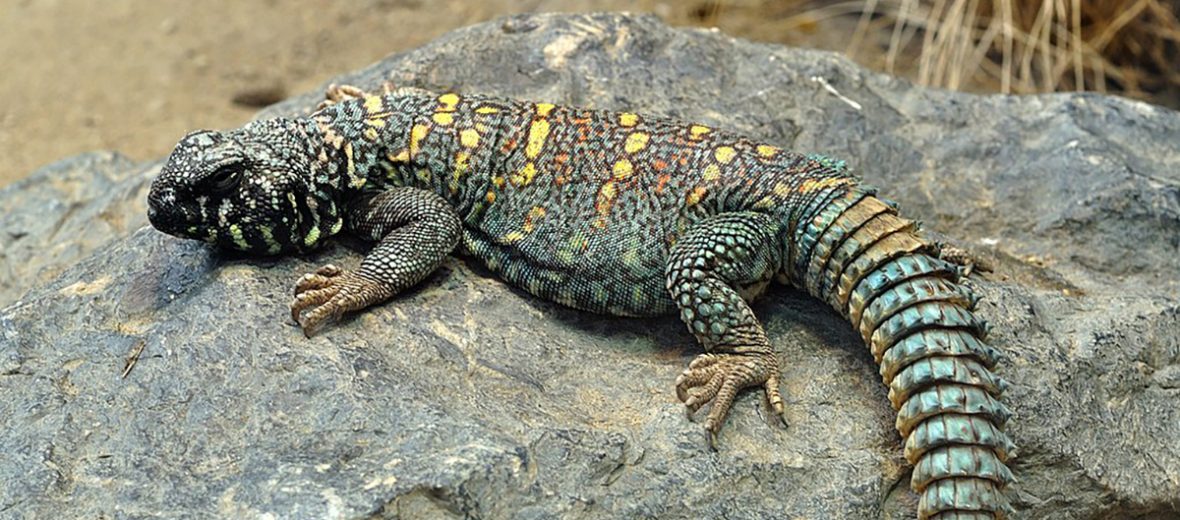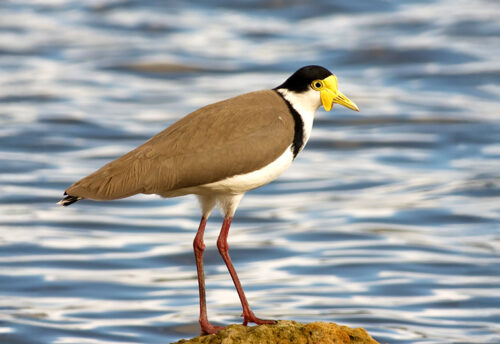
The uromastyx, aka uromastyces, mastigures, spiny-tailed lizards, or dabb lizards, can be found in northern and northeastern Africa and the Middle East. They prefer hilly, rocky regions with proper shelter and access to vegetation. These critters are listed as Least Concern to Vulnerable, based on the species. The threats faced are habitat loss and destruction at the hands of residential and commercial development, livestock and ranching, and oil & gas drilling; hunting; trapping; and over collection for the pet trade. Their populations are also decreasing.
First the Stats…
Scientific name: Uromastyx
Weight: Up to 4.4 lbs.
Length: Up to 30+ inches
Lifespan: Up to 20 years
Now on to the Facts!
1.) There are 15 known species of uromastyx.
2.) While being primarily herbivorous (eat plant matter), they will occasionally eat insects and other small animals; particularly young lizards.
3.) Uromastyx usually sleep in their burrows head first. This way they keep their spiny tail closest to the burrow’s opening to thwart predators from attempting to eat them.
4.) During hotter times their colors are lighter. They get darker during cooler times to absorb more heat.
5.) These lizards can be found at elevations of up to 3,000 feet.
But wait, there’s more on the uromastyx!
6.) Most of the moisture they get is from the vegetation they consume.
7.) Females lay up to 40 eggs that hatch in up to 80 days.
Did you know…?
They are able to swing their spiked tail at attackers with high speed. They will also gape (open their mouth) and hiss loudly.
8.) Newborn uromastyx will eat their mother’s waste as their first meal, before venturing out on their own to find more nutritional food. This is done to establish appropriate gut flora that will later aid them in digesting the foods they will eat later in life.
9.) Some species are cabable of growing up to 2 inches per year, till they reach 8 – 9 years old.
10.) Wolves, dogs, and birds of prey all hunt the uromastyx. Humans also eat them.
11.) These lizards are diurnal (active during the day).
Now a Short Uromastyx Video!
Be sure to share & comment below! Also, check out the Critter Science YouTube channel. Videos added regularly!
Want to suggest a critter for me to write about? Let me know here.
Photo credit: Quartl



